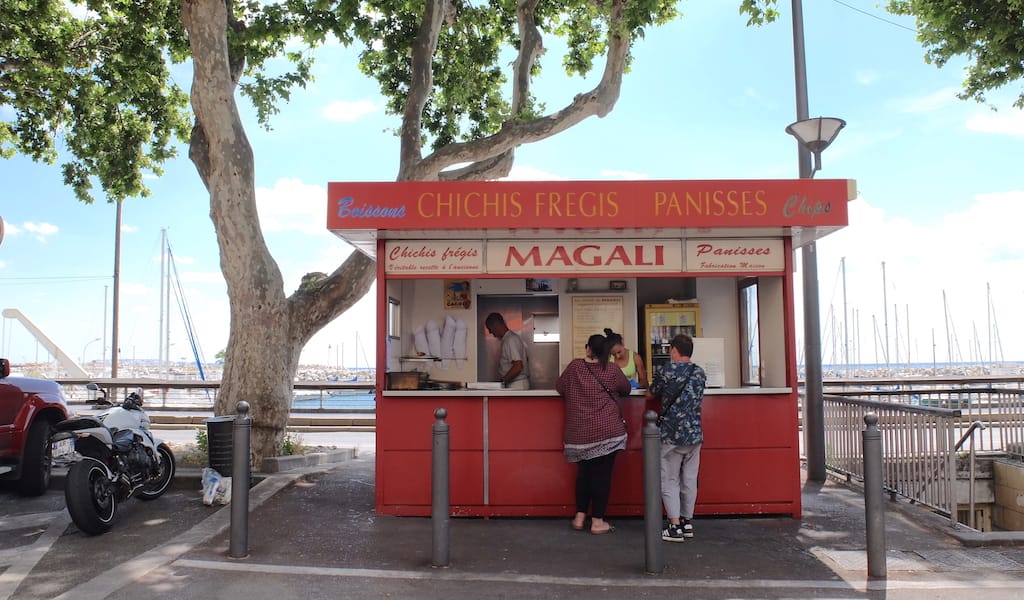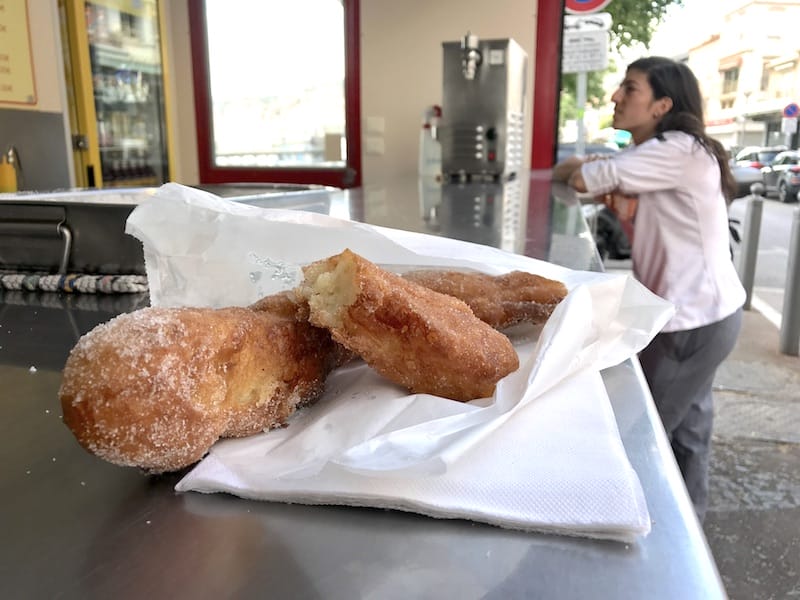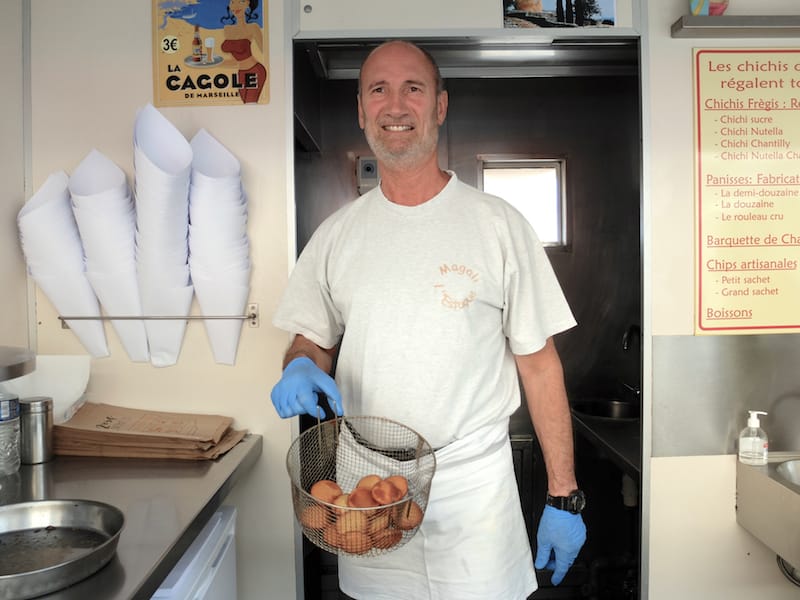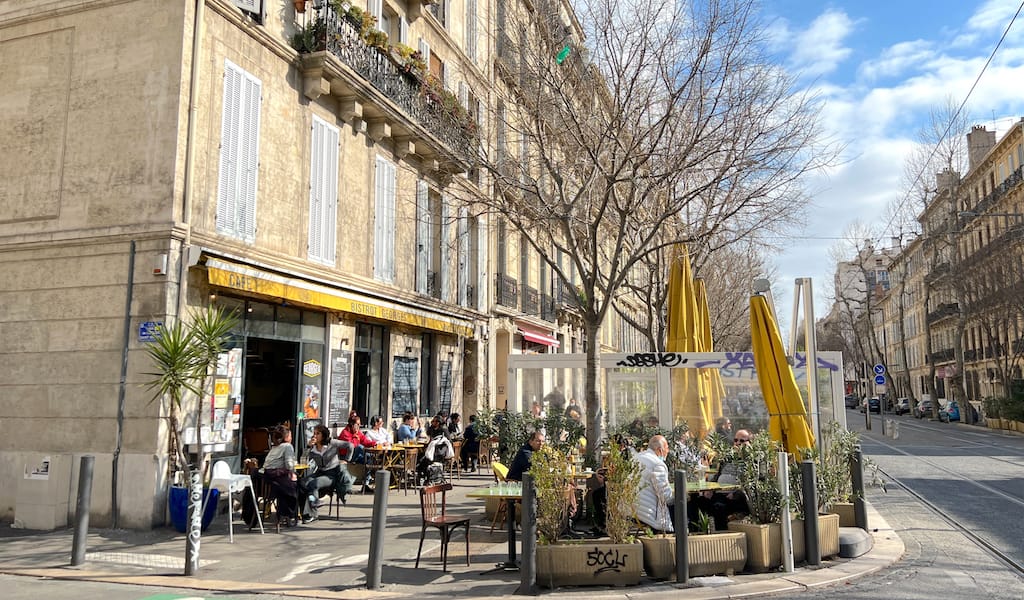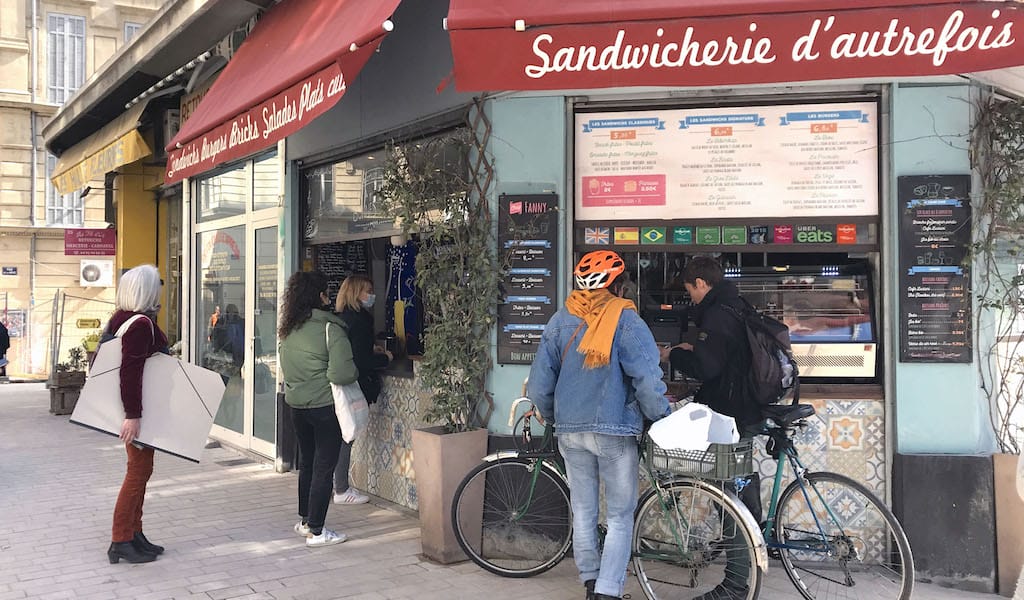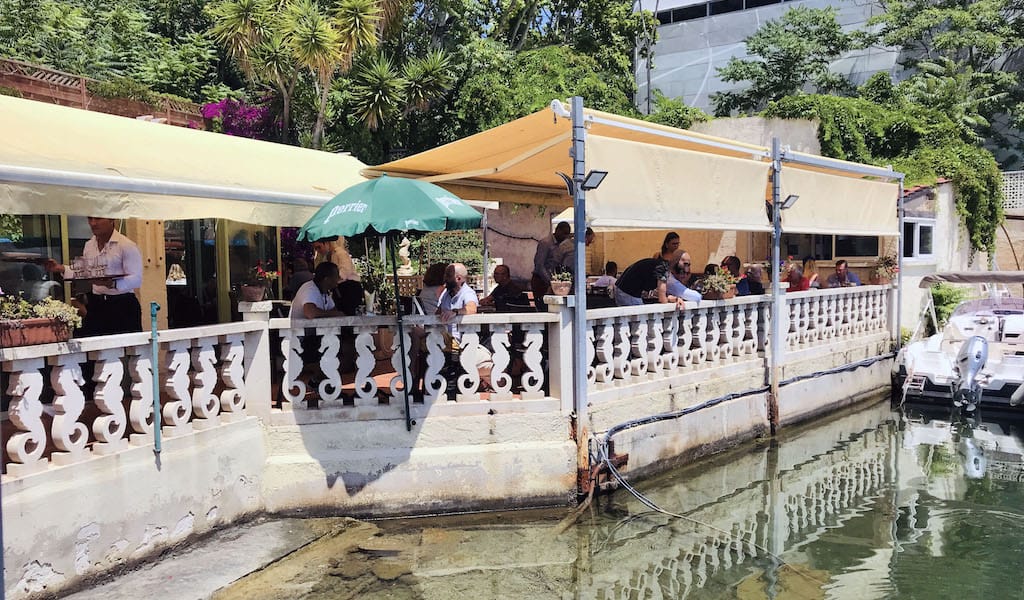Perched at the northern tip of Marseille, the fishing port of L’Estaque has drawn diverse groups throughout the decades. In the last half of the 19th century, bourgeois Marseillais would tram from the city center to eat bouillabaisse and swim on its shores. When the industrial era launched in 1820, L’Estaque housed workers from the nearby factories where traditional Provençal terra cotta tiles were made.
From the late 19th century to the early 20th century, the diverse landscape and the incredible light lured painters from the north like Braques and Cézanne, who compared the sloping village to a “playing card” with its “red roofs against a blue sea.” But since the 1930s, people have flocked to L’Estaque for another reason: the fried snacks.
Though they look like unassuming beach shacks that serve freezer-to-microwave food, the three stands that line the village’s main drag are as essential to Marseille’s culinary legacy as its bouillabaisse. They sell the city’s original street food: chichis fregis, long, fried-dough fritters, and panisses, the round chickpea fries that are munched at apéro. In spite of their similar menus, each cabane has its own personality – and each local has one they prefer. Mine is Chez Magali.
Run by Michel Morales, Chez Magali is known for using 100 percent natural ingredients and sticking to the original chichi recipe that was used by Italian immigrants, the originators of many typical Marseille eats (like pizza). Having migrated to the city to work in factories and on fishing boats, they cooked up panisses (starting around 1840) and chichis (whose entry is recorded a bit later, around 1907), inexpensive treats that stood in stark contrast to fancy French preparations.
Michel fiercely guards his top-secret chichi recipe. As their name hints – chichi is “little fried bits of chickpea” in Provençal – there is some chickpea flour mixed in addition to wheat pastry flour. During my conversation with Michel, a man beside me leans over to say that chichi is also a pet name for male genitalia – the adult version of the infantile zizi that parents use when speaking to their sons. Fregi has a less sexual origin: It is the Provençal word for fried.
Michel explains how the chichis are “lighter than beignets or churros,” which is why their dough is somewhat liquid-y and needs to be made fresh throughout the day. Each time someone orders, he packs the dough into a metal cylinder and presses it into a snakelike pattern in a large vat of peanut oil – not olive oil as is falsely believed. Once cooked, he removes the long, spiral doughnut with a large spatula, placing it on a metal rack to let the excess oil drip away.
During the week, Genevieve and Angelique (two moms who work part-time to earn extra cash) will snip off a hot, cruller-size piece, dip it in sugar, and then wrap it in white paper to keep your hands from getting oily. You can also get your chichis with whipped cream (chantilly) or Nutella – a kid favorite that has usurped traditional jam. To taste the delicious freshness, I like mine simply doused in sugar, which brings out the lemon zest that is a signature of the Chez Magali recipe.
Michel explains how the chichis are “lighter than beignets or churros”
For a savory snack, Chez Magali also sells bags of Provence potato chips and panisse, the puck-sized cousin of the Italian chickpea pancake farinanta. Michel makes his simple dough with chickpea flour, salt and water at his Aubagne atelier. You can either buy a cone of freshly fried panisses or an uncooked roll to fry up at home. Tender on the inside and crispy on the outside, these salty snacks are particularly good with a glass of rosé, an ice-cold beer or pastis.
Chez Magli sells Quebec, an improbably named Provençal soda, plus two beers beloved by locals: Corsican Pietra and Marseille-made Cagole. Or, if you prefer a table, order a cold beverage at the bar across the street, which lets you BYOP (bring your own panisses). The bar also serves café to pair with your chichis.
Michel bought Chez Magali 18 years ago. Formerly a successful sales director at a big industrial food company, he suddenly found himself out of work when new management fired him. When he heard the owner of Chez Magali was retiring, Michel took the plunge, going from processed snack food seller to heritage snack maker.
“This job is much healthier,” he winks, referring to both the product and the lifestyle. In the corporate grind, he was over-stressed and over-traveled. Here, he’s his own boss, a “little king in his little kingdom.” But the 10-square-foot snack stand is actually no small potatoes when it comes to earnings – Michel has continued to support his family with Chez Magali.
His wife comes to help out on Sundays, especially during the full swell of beach season. The stand opens each afternoon around 2 p.m., the line longest at the “heure du goûter” (snack time), when kids seek a post-school snack. Locals swing by for apéro fixings and Marseillais make a pit stop en route back to the city from the northern beaches. Sometimes Michel has to play traffic cop when they block the road in front of his stand.
He always does so with a smile, ever thankful for the business. Since owning the stand, sales have been steady. He noticed an uptick with the arrival of the RTM ferry boat from the Vieux-Port as well as an increased interest in heritage food, which earned him appearances on national and international foodie shows. The winter clientele is predominantly local while the summer crowds come from all corners of the globe. On my last visit, a line cook from Le Petit Nice, Marseille’s only 3-Michelin star restaurant, bought snacks for her kitchen brigade – a testament to their universal appeal.
Chez Magali’s charm also comes from the fact that they, and their neighboring stands, are the last remaining spots to eat authentic chichis. This allure is amplified by L’Estaque’s remote location next to the majestic limestone Chaîne de la Nerthe cliffs. It takes a 40-minute bus or ferry ride from the Vieux-Port to reach Marseille’s most northern village. The destination is worth the journey.
Editor’s note: Michel retired in 2022. The new young owners are carrying on this finger-lickin’ tradition.
Published on June 16, 2020







































